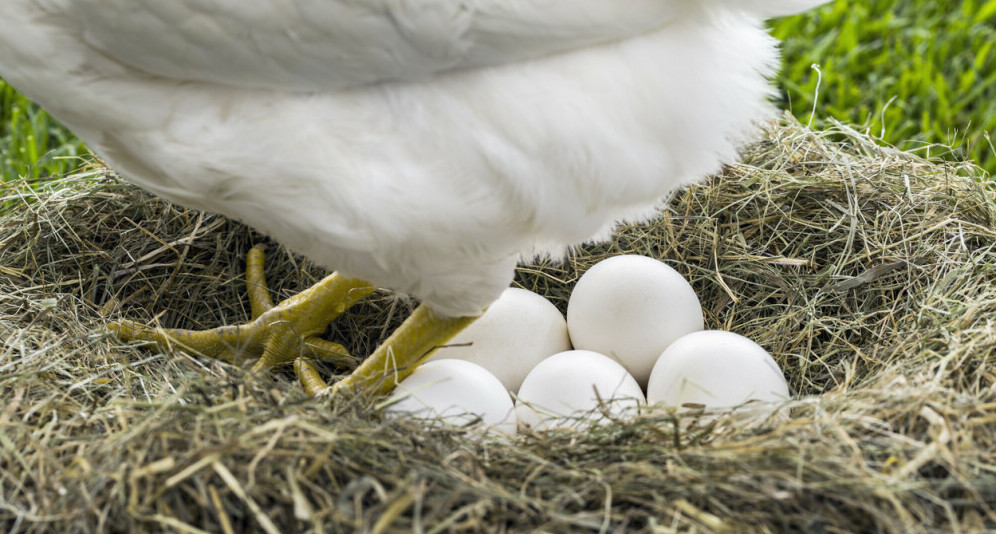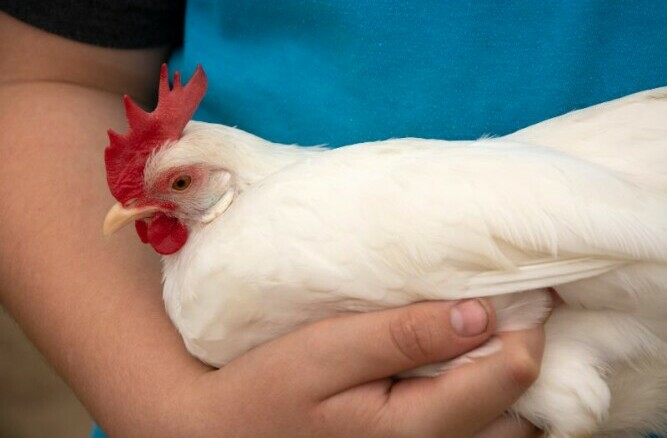Leghorn Chickens: The Backyard Egg-Laying Powerhouse!
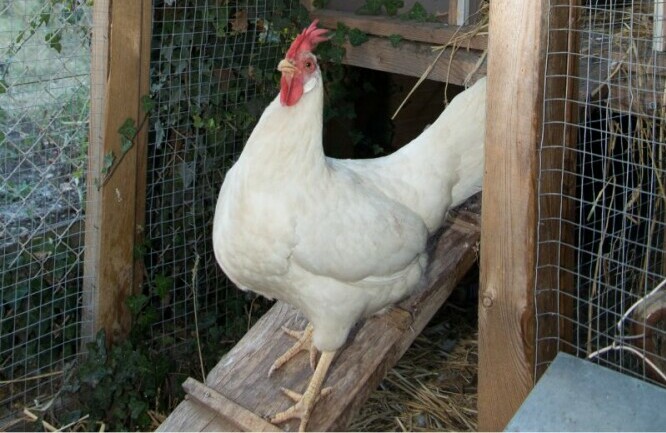
Do you like fresh, delicious eggs daily? Look no further than the Leghorn chicken, a breed renowned for its remarkable egg-laying prowess!
These active and energetic birds have earned their reputation as egg-laying champions, making them a popular choice for backyard flocks around the world.
Where did these egg superstars come from? Leghorns originated in the Italian port city of Livorno (hence the name!) and were later brought to the United States in the mid-1800s.
They quickly gained popularity for their prolific egg production and became a mainstay in the poultry industry.
But how well do they really lay?
Get ready to be amazed!
A Leghorn hen can lay between 150 and 320 large, white eggs per year. Depending on the specific variety, some exceptional hens can even reach a peak of 300-350 eggs annually. That’s a breakfast bonanza!
With such impressive egg production, what else is there to know about these chickens? Let’s forge ahead and find out.
Leghorns come in a variety of colors, including white, brown, buff, and black. Each variety maintains impressive egg-laying abilities.
Temperament: Leghorns are generally active and curious birds. They can be flighty at times, but they are also relatively friendly and adapt well to backyard settings.
Child-friendliness: While not inherently aggressive, Leghorns can be skittish and easily startled. They may not be the best choice for very young children who might handle them roughly.
Availability: Leghorns are readily available from hatcheries and chicken breeders. Their popularity ensures you’ll have no trouble finding these egg machines.
Special care needs: Like all chickens, Leghorns require sufficient space to roam, a clean coop, fresh food and water, and regular veterinary checkups. They also benefit from enrichment activities like scratching and dust bathing.
So, are Leghorns the right choice for you? If you’re looking for a prolific egg layer that’s relatively low-maintenance, Leghorns could be your ideal breed. Just be sure you can provide them with the space and care they need to thrive and deliver their egg-cellent bounty.
Unpacking the Laying Abilities of Leghorns
We’ve established Leghorns as egg-laying champions, but let’s look a little further into what makes them so prolific.
Frequency and Quantity: Leghorns are true egg-laying machines. On average, a healthy Leghorn hen can lay an impressive 5-7 eggs per week, translating to 150-320 eggs per year. That’s an egg nearly every day!
Some exceptional hens, especially those from carefully bred lines, can even reach peak production of 300-350 eggs annually. Imagine having a fresh, organic breakfast option almost every day of the year!
Egg Quality: Leghorns are known for laying large, white eggs. Their eggs have a reputation for being delicious and nutritious, with a firm white and a rich, golden yolk.
The average Leghorn egg weighs between 50-60 grams, making them perfect for breakfast, baking, and all your cooking recipe needs.
Why Leghorns are the Egg-Production Kings:
Leghorns have several key factors contributing to their exceptional egg-laying abilities:
- Genetics: Centuries of selective breeding have honed Leghorns into efficient egg-laying machines. Their genes are optimized for egg production, influencing everything from their metabolism to their reproductive cycle.
- Early Maturity: Leghorns mature quickly, often starting to lay eggs as early as 4-5 months old. This means they spend less time growing and more time laying, maximizing their egg-laying potential.
- Efficient Feed Conversion: Leghorns are excellent at converting their feed into eggs. They require less food per egg laid compared to other breeds, making them a cost-effective choice for egg producers.
- Laying Longevity: Leghorns maintain their impressive laying abilities for several years. While their peak production occurs in their first 2-3 years, they can continue laying well into their 4th and even 5th years.
These factors combined make Leghorns the undisputed champion of egg production. Few other breeds comes close to their consistency, quantity, and efficiency in laying large, delicious eggs.
So, if you’re looking to add a feathered egg machine to your backyard flock, Leghorns are the perfect choice. They will reward you with a steady supply of fresh, delicious eggs, day after day, year after year.
In the next segment, we’ll explore the different types of Leghorns and how their laying abilities might differ. Stay with me!
We’ve established Leghorns as champions of egg production, but did you know the Leghorn family extends beyond the classic white variety? This diverse breed comes in a rainbow of colors, each with its own unique charm and personality.
Let’s explore the different types of Leghorns
1. White Leghorn: The most common and well-known Leghorn, characterized by its pure white plumage and large, bright red comb. They are the undisputed champions of egg production, laying an average of 250-300 eggs per year.
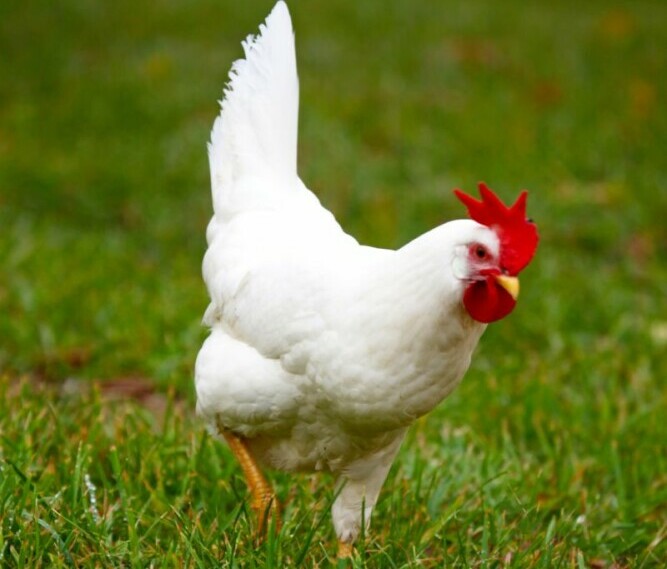
2. Brown Leghorn: Boasting a beautiful brown plumage, the Brown Leghorn is a sight to behold. They are slightly smaller than their white counterparts, laying an average of 200-250 eggs per year.

3. Buff Leghorn: This variety sports a warm, golden-buff plumage that adds a touch of elegance to any backyard flock. They are known for their calm temperaments and lay around 200-250 eggs per year.
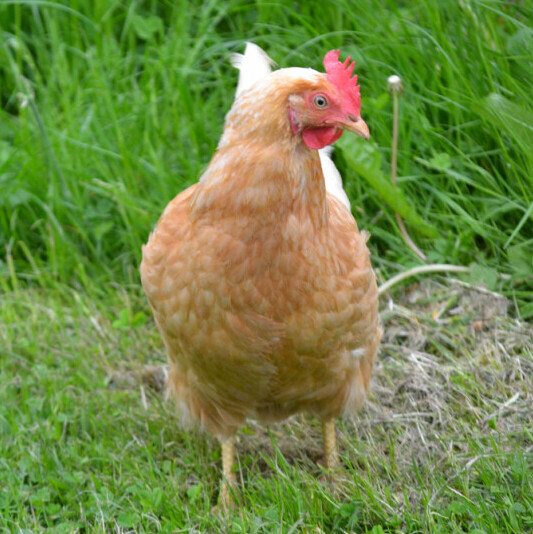
4. Black Leghorn: With their sleek, black feathers and iridescent green sheen, Black Leghorns are a truly striking breed. They lay an average of 200-250 eggs per year and are well-known for their active and curious personalities.

5. Silver Leghorn: This beautiful variety features a silvery-white plumage with black markings on the tail and wings. They are slightly less prolific than other Leghorns, laying an average of 150-200 eggs per year.
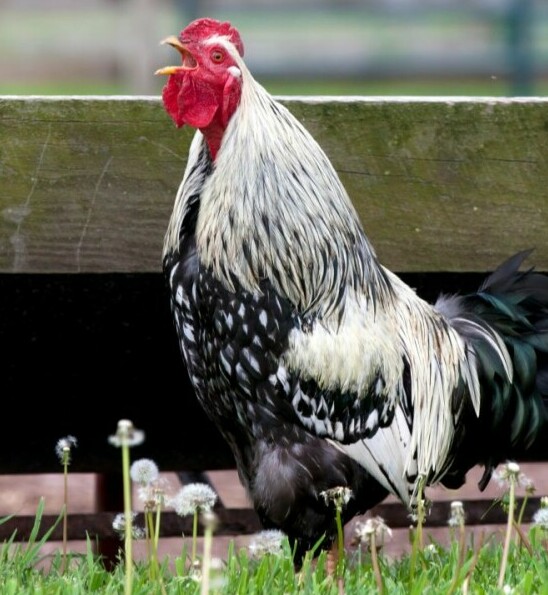
Do the different types affect their laying abilities?
While the different Leghorn types have slight variations in their average egg production, all are considered excellent layers. The key factors influencing laying ability are genetics, feed and water quality, and environment, not their specific color.
Distinctive Physical Characteristics:
Each Leghorn type has its own unique set of physical characteristics:
- Head: All Leghorns have a large, bright red comb and wattles that are more pronounced in males.
- Body: They have a slender body type with a long neck and a prominent keel bone.
- Tail: Their tails are carried high and are relatively short compared to other breeds.
- Legs: Leghorns have long, slender legs that often appear bare due to their minimal feathering.
- Eyes: Their eyes are alert and bright, ranging in color from orange to brown.
Choosing the Right Leghorn:
With so many beautiful varieties to choose from, it can be difficult to decide which Leghorn is right for you.
Consider your individual needs and preferences when making your decision. If egg production is your top priority, the White Leghorn is the best choice.
However, if you’re looking for a specific color or personality, explore the other varieties and find the perfect breed for your backyard flock.
Leghorn Chickens: Feisty Friends or Flight Risks?
Leghorns have captured hearts with their exceptional egg-laying abilities, but what about their personalities? Are these feathery friends suitable for family settings and interactions with children? C’mon, let’s find out.
The General Leghorn Temperament
Leghorns are known for being active, curious, and alert. They are naturally flighty and enjoy exploring their surroundings.
While not inherently aggressive, they can be easily startled, leading to skittish behavior.
Their quick movements and potential for nervousness might not be the best match for very young children who may handle them roughly unintentionally.
Compatibility with Children:
With proper supervision and introductions, Leghorns can be compatible with older children who understand how to handle animals gently and respectfully. Here are some key points to consider:
Positive Traits:
- Curious and friendly: Leghorns are naturally curious and often enjoy human interaction. This can be a positive learning experience for children who are interested in learning about animal care.
- Relatively calm: While active, Leghorns are not typically aggressive toward humans. They are more likely to run away than attack if startled.
- Low maintenance: Leghorns are relatively low-maintenance birds, requiring less attention than some other breeds. This makes them a good option for families with busy schedules.
Potential Challenges:
- Flighty nature: Leghorns can be easily startled and may fly away if handled incorrectly. This can be frustrating for children who want to interact with them.
- Nervousness: Some Leghorns can be nervous around humans, especially young children. They may not enjoy being held or cuddled.
- Egg-laying instinct: Leghorns are prolific egg layers. This can benefit families who enjoy fresh eggs, but it can also be a challenge if children are tempted to collect eggs before the hens are finished laying.
Guidelines for Safe Interaction
To ensure safe and positive interactions between children and Leghorns, follow these simple guidelines:
- Supervise young children closely: Never leave young children alone with Leghorns. Always supervise interactions to prevent accidental injuries or stress to the birds.
- Teach gentle handling: Teach children how to handle Leghorns gently and respectfully. Avoid chasing or grabbing the birds, and allow them to approach on their own terms.
- Start slow: Introduce children to Leghorns slowly and gradually. Allow them to observe the birds from a distance before attempting to interact with them.
- Focus on positive interactions: Reward positive interactions between children and Leghorns with treats and praise. This will help the birds associate children with positive experiences.
- Respect the birds’ boundaries: If a Leghorn seems nervous or uncomfortable, allow it to retreat. Do not force interaction or try to pick up a bird that is not interested.
By following these guidelines and fostering a respectful relationship between children and Leghorns, families can experience the joy of having these friendly and productive birds as part of their backyard flock.
Leghorns can be wonderful additions to family farms with older children who understand how to interact with them respectfully. These feathery friends can provide years of enjoyment and fresh eggs with proper care and supervision.
Leghorns: Accessible Egg Layers with A Few Specific Requirements
With their exceptional egg-laying abilities and charming personalities, Leghorns have captured the hearts of many chicken keepers. But before you welcome these chickens into your backyard, let’s understand their availability and any special care needs they might require.
Finding Your Leghorns
Leghorns are readily available, making them an excellent choice for first-time chicken keepers. They can be found at:
- Hatcheries: Many hatcheries across the country sell Leghorn chicks and pullets (young hens). My Pet Chicken and Cackle Hatchery comes to mind.
- Breeders: Local breeders often specialize in specific Leghorn varieties, offering chicks, pullets, and even adult hens.
- Poultry shows and swap meets: These events provide an opportunity to meet breeders and other chicken enthusiasts, potentially finding Leghorns for sale.
Before bringing your Leghorns home, consider:
- Number of birds: While Leghorns don’t require as much space as some larger breeds, they still need room to roam. Plan to provide at least 3 square feet per bird in the coop and 10 square feet per bird in the run.
- Age of birds: Chicks require more specialized care than adult birds. Consider your experience level and choose chicks, pullets, or adult hens accordingly.
- Gender: If you primarily want fresh eggs, hens are the way to go. Roosters, while beautiful, are not typically recommended for backyard flocks due to their crowing and potential aggression.
Special Care for Optimal Laying
While Leghorns are relatively low-maintenance birds, they have some specific needs to maintain their impressive egg production:
Nutrition: Leghorns require a balanced diet specifically formulated for laying hens. This will provide them with the essential nutrients they need to produce healthy eggs.
Supplements: During periods of heavy laying, Leghorns may benefit from additional calcium supplements to ensure strong eggshells.
Fresh Water: Provide clean, fresh water at all times. Dehydration can significantly impact egg production.
Light: Leghorns need 14-16 hours of light per day to maintain peak egg production. Consider using artificial light during winter to ensure they get the light they need. I’m not a fan of forced laying, but it is done, so you might as well know how to do it.
Pest control: Regularly check your coop and run for pests such as mites and lice. These pests can stress your birds and impact egg production.
Predators: Secure your coop and run to protect your Leghorns from predators such as foxes, raccoons, and hawks.
Maintaining a Healthy Environment:
A clean and healthy environment is essential for happy and productive Leghorns. Here are some tips:
- Clean the coop and run regularly: Remove droppings, bedding, and any other debris to prevent the build-up of bacteria and parasites.
- Provide plenty of ventilation: Good air circulation helps prevent respiratory problems and keeps the coop smelling fresh.
- Create a dust bathing area: Leghorns use dust baths to clean their feathers and stay healthy. Provide a dry, sandy area for them to use.
- Offer enrichment activities: Leghorns are intelligent birds that need mental stimulation. Provide them with toys, perches, and other items to keep them entertained.
By following these tips and providing your Leghorns with proper care, you can create a healthy and happy environment that will encourage them to lay their best eggs for years to come.
Leghorns are a fantastic choice for backyard chicken keepers looking for prolific egg layers. Their availability, relatively low-maintenance needs, and charming personalities make them ideal companions for families and individuals alike. By understanding their specific care requirements and creating a healthy environment, you can ensure your Leghorns thrive and reward you with an abundance of fresh, delicious eggs.
Leghorn Chickens: An Egg-cellent Choice for Your Backyard Flock
As we conclude our exploration of Leghorn chickens, it’s clear why these feathered friends have earned their reputation as egg-laying champions.
Their exceptional abilities, charming personalities, and relatively low-maintenance needs make them an excellent choice for a variety of chicken keepers.
Here’s why Leghorns deserve a place in your backyard:
- Unmatched Egg Production: Leghorns lay an impressive 250-320 eggs per year, providing a steady supply of fresh, delicious eggs for your family to enjoy.
- Suitable for Different Keepers: From experienced chicken enthusiasts to curious beginners, Leghorns adapt well to various settings and care levels.
- Family-Friendly: While not recommended for very young children, older children can learn valuable lessons about responsibility and animal care with proper supervision.
- Active and Alert: Leghorns add a vibrant energy to your backyard with their lively personalities and curious nature.
- Relatively Low-Maintenance: Compared to other breeds, Leghorns require less specialized care, making them a good choice for busy families.
Whether you’re a seasoned chicken keeper or just starting your backyard flock adventure, Leghorns offer a rewarding and enjoyable experience. Remember, responsible and informed poultry keeping is essential for the well-being of your feathered friends. Do your research, provide them with proper care, and enjoy the bounty of fresh eggs and companionship that Leghorns have to offer.
Thanks for reading. If you want to share your experience with Leghorn chickens, please comment below.
Dave
Chickenmethod.com

